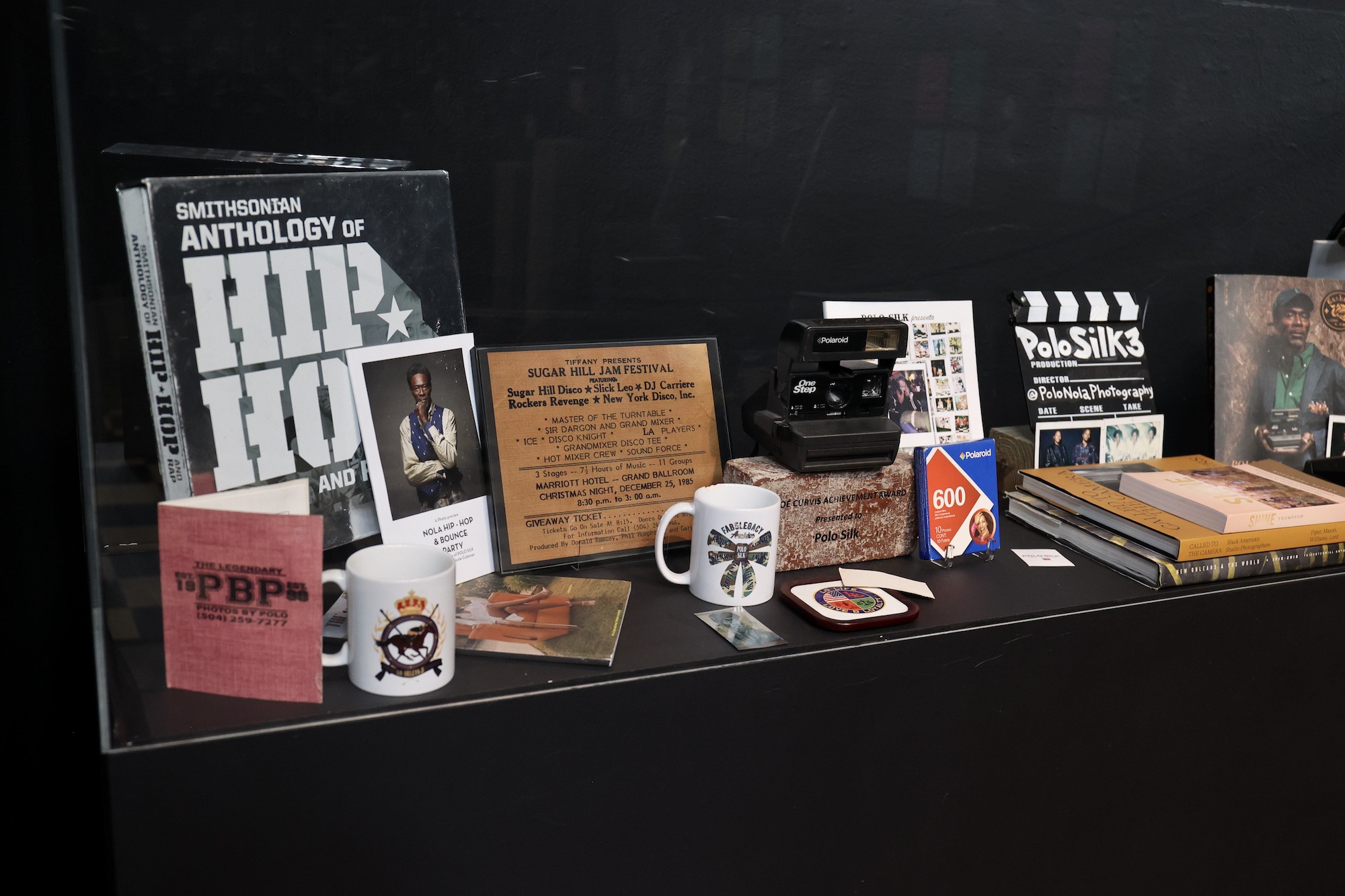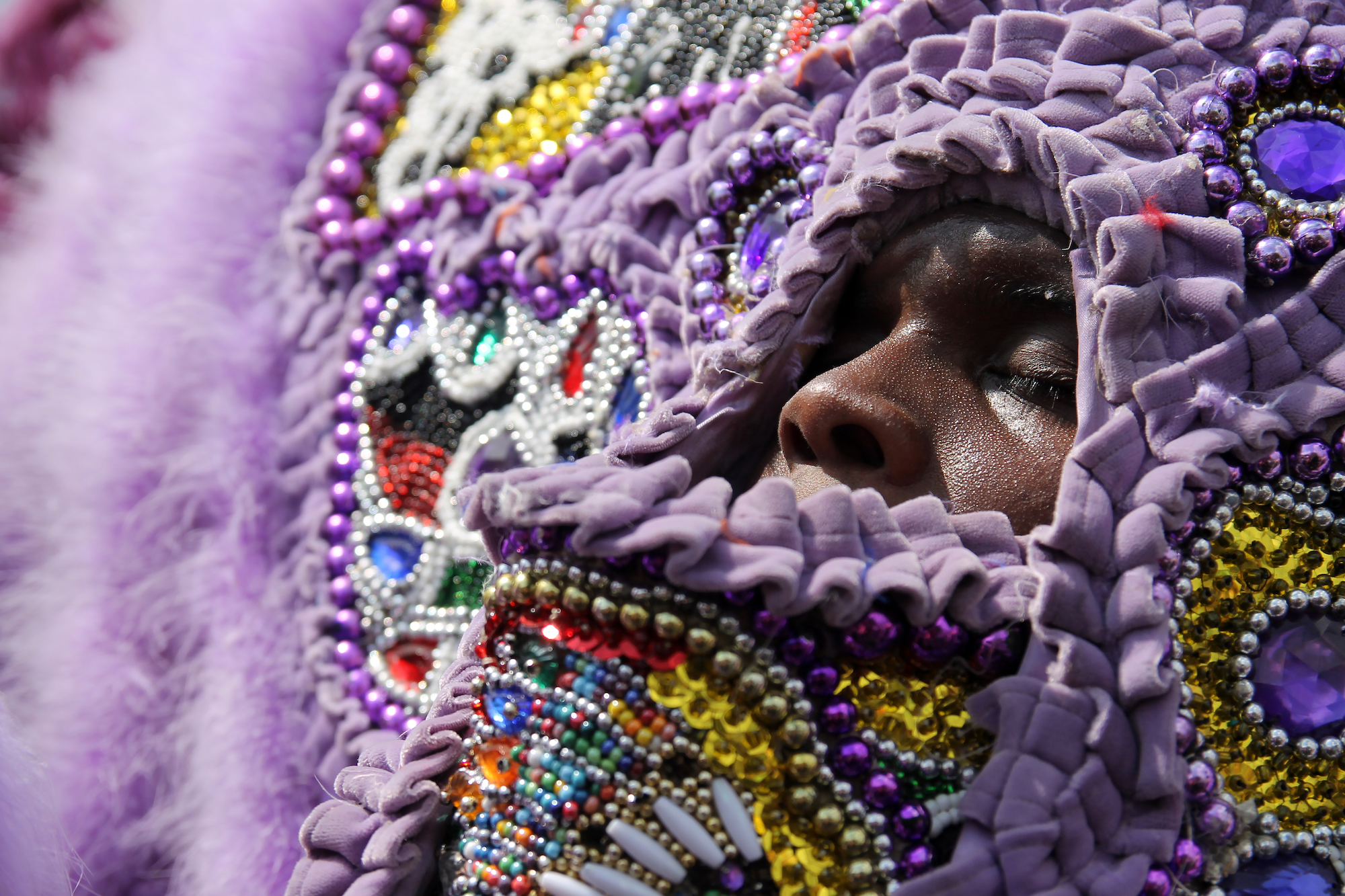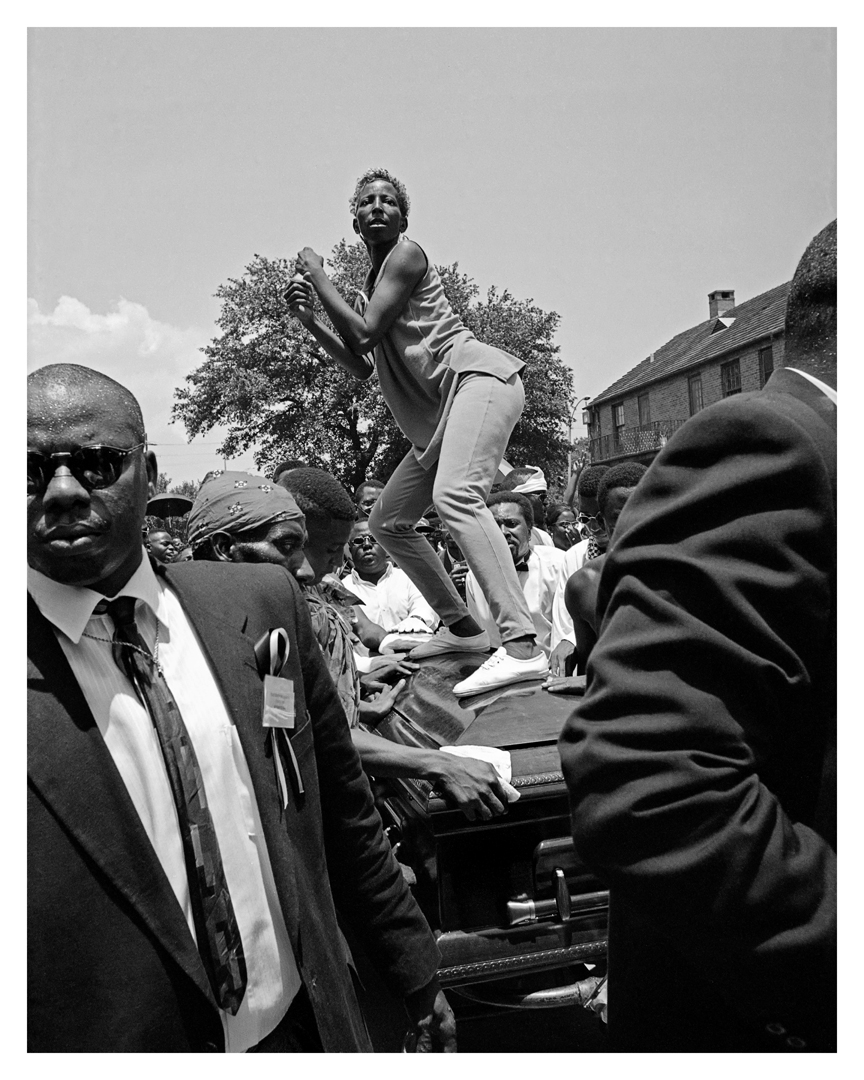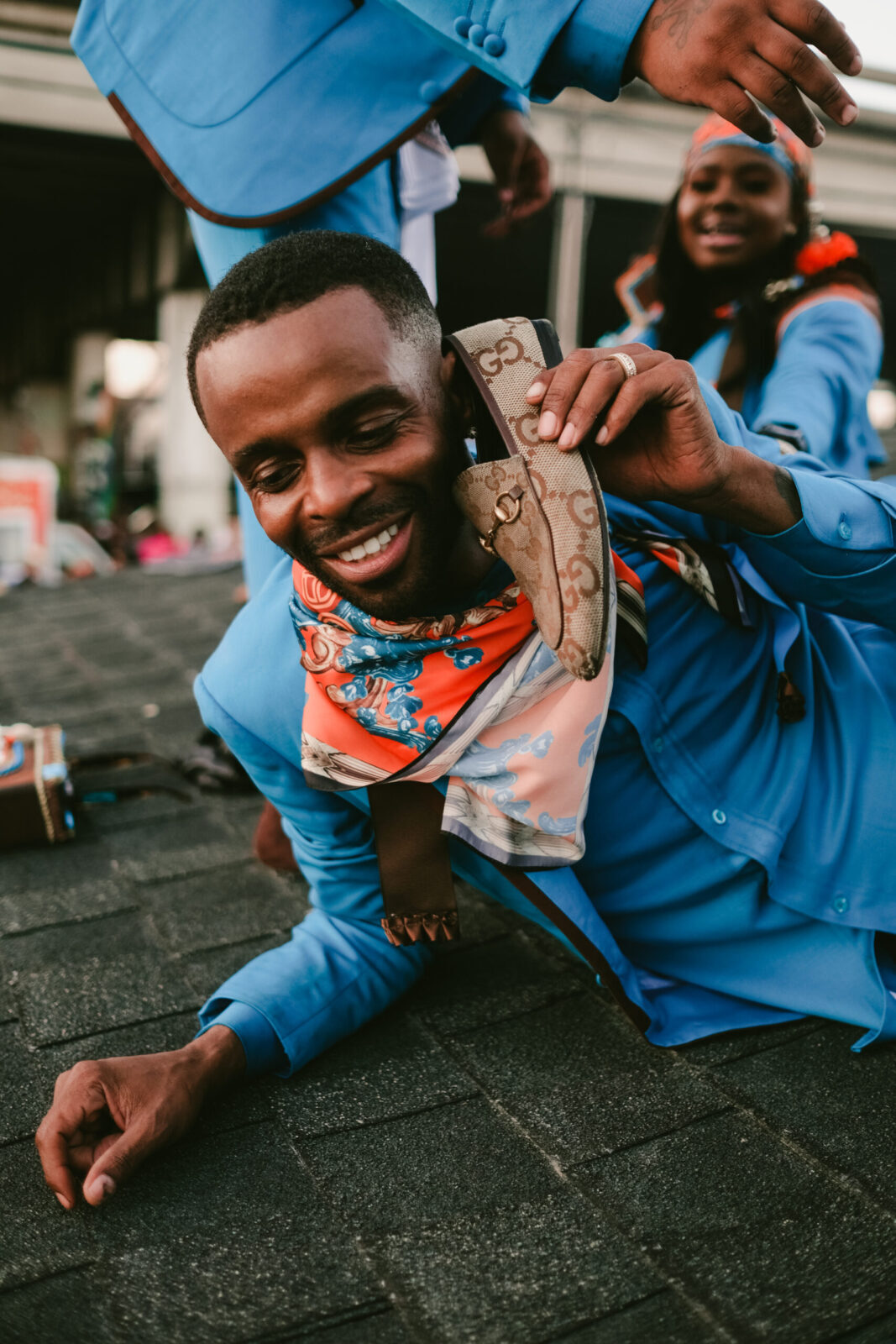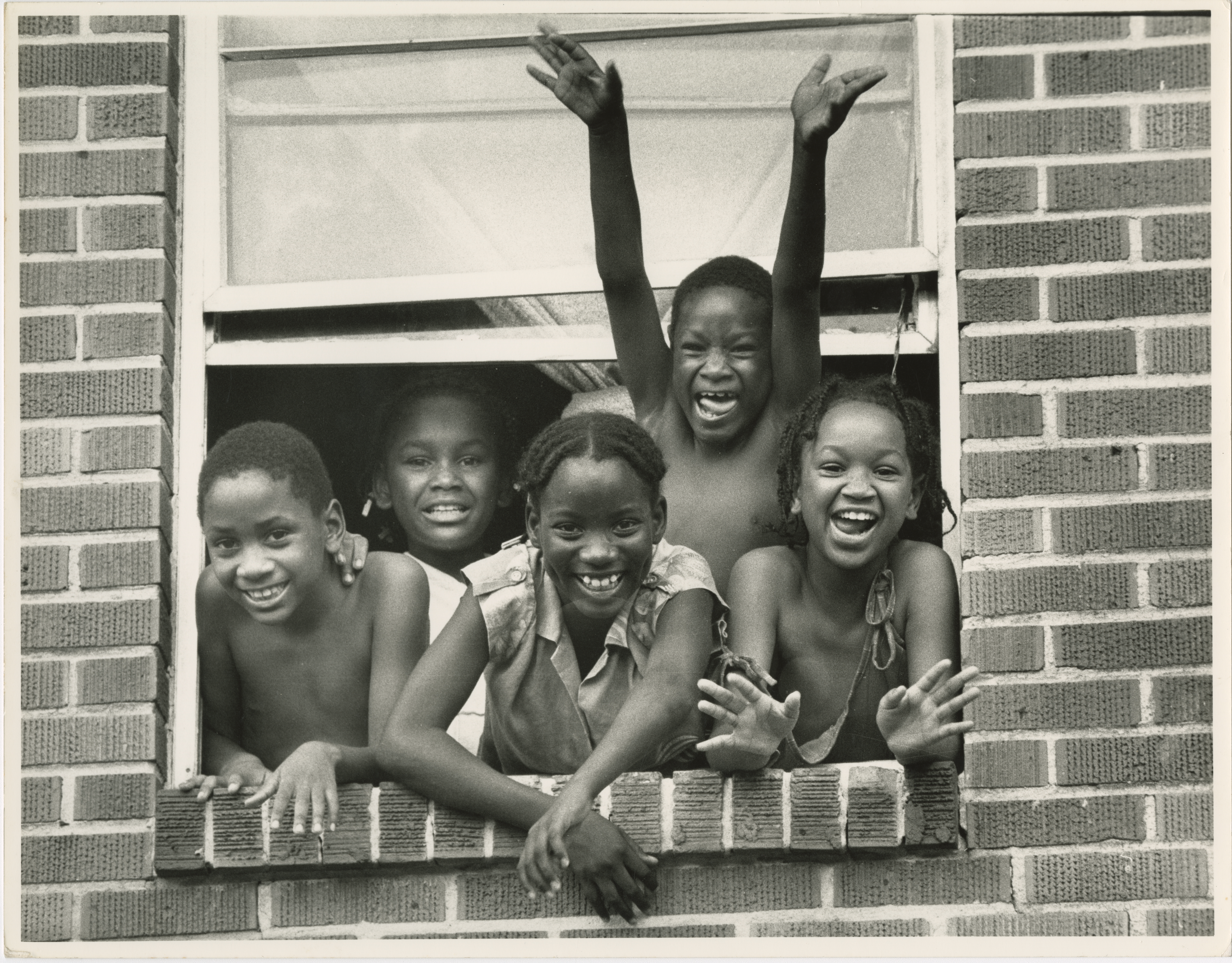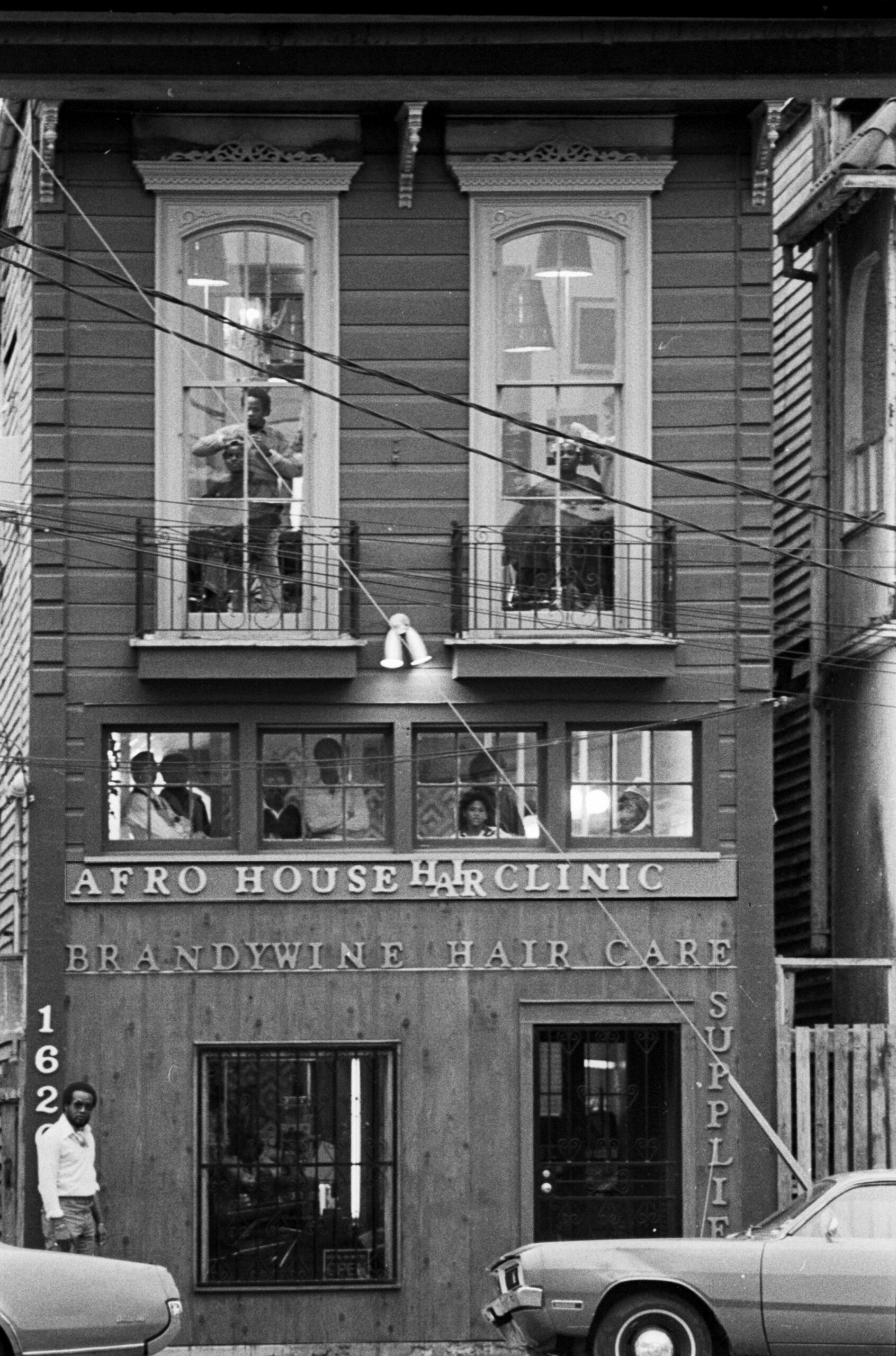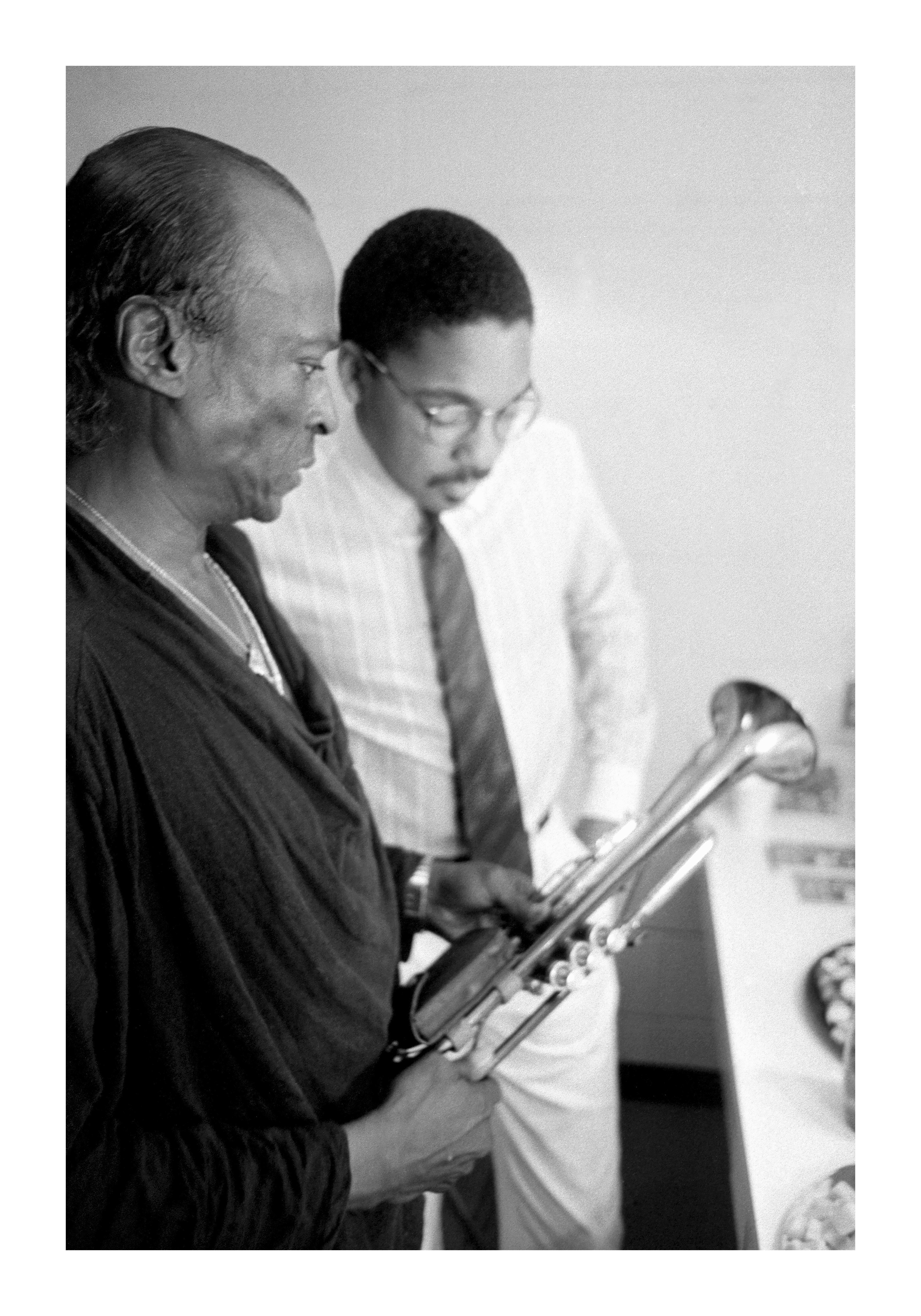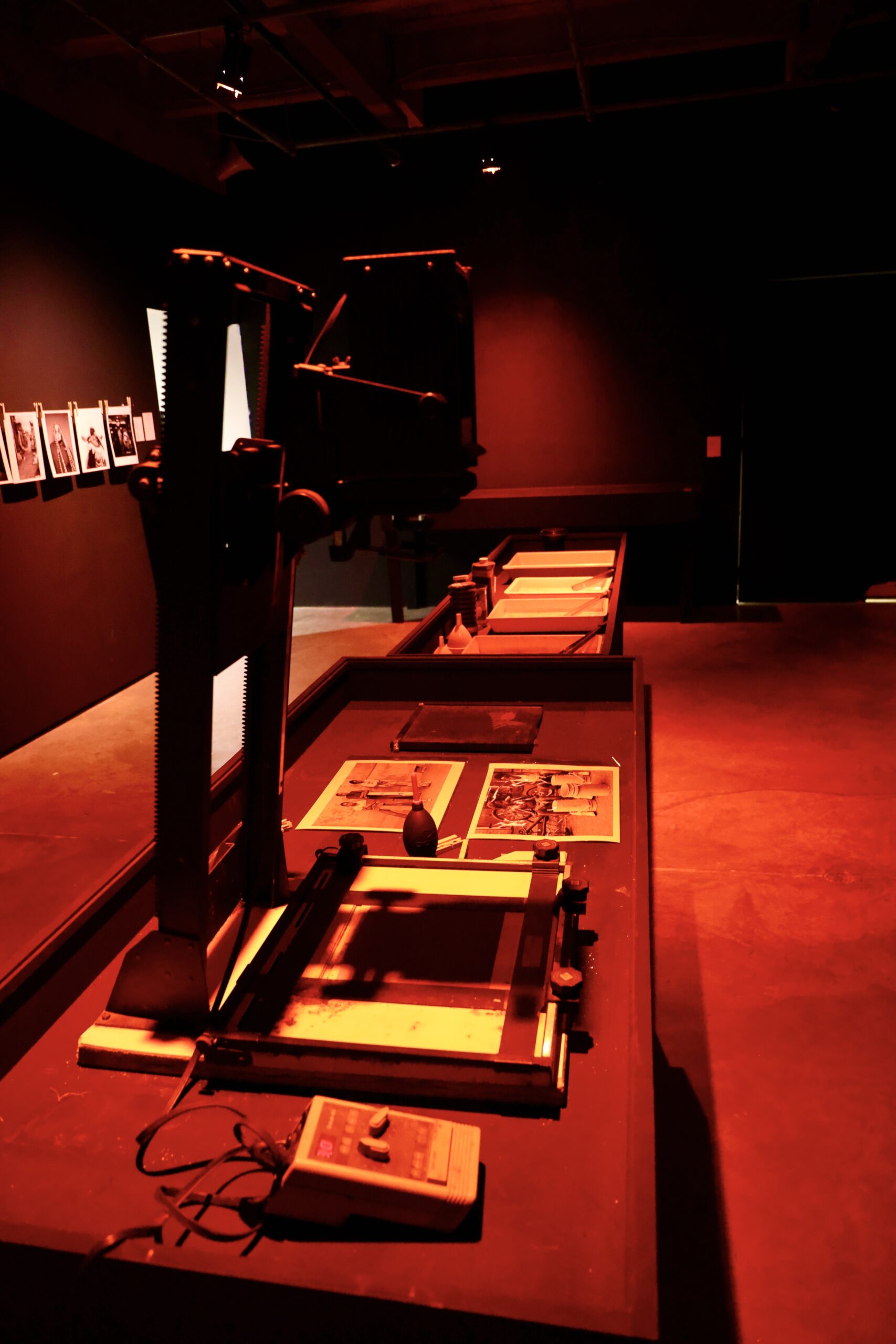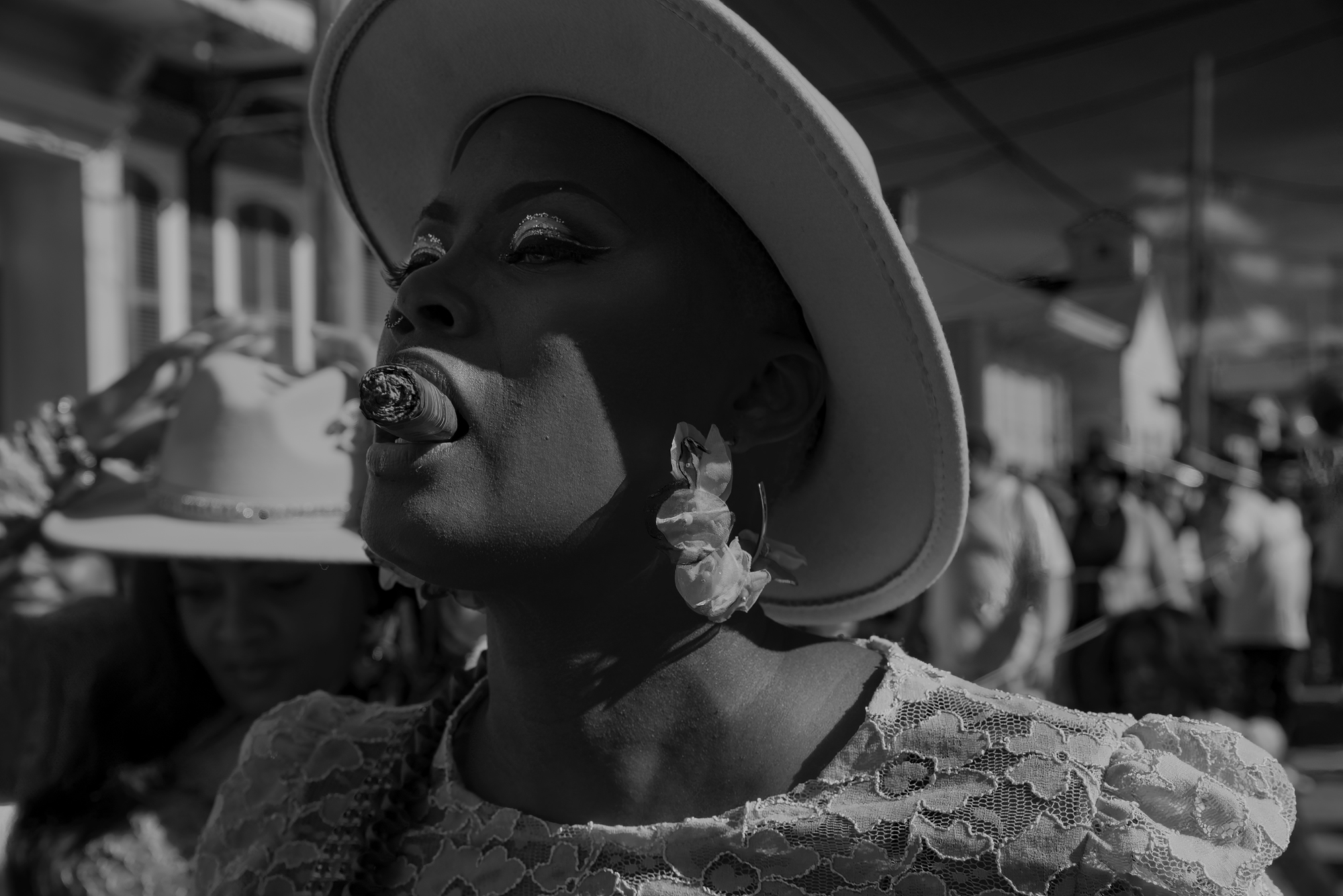
Eric Waters, Cigar Woman, photograph [courtesy of artist for SEEING BLACK, and Contemporary Arts Center New Orleans]
Gestures of Refusal:
Black Photography and Visual Culture
Share:
Gestures of Refusal: Black Photography and Visual Culture is the third installment in the Seeing Black1 series curated by Shana M. griffin. Currently on view at the Contemporary Arts Center in New Orleans, Gestures is vast and disarming. Before going, I wondered what it would look like: refusing / reiterating / recognizing a way of recounting (all) the ways that we appear to one another—as artists, as humans—swept up in the throes of Blackness. Recognizing. Reiterating. Refusing. The “refusal” in the exhibition’s title is more than a gesture, more than a sum of gestures. It is a reckoning. Gestures of Refusal needs to be seen many times, by as many of us as possible. It takes repeated visits to fully grasp the reach and intention of griffin’s curatorial ambitions. I’m especially struck by the curator’s decision to not include titles, dates, or a strict adhering to order (in terms of which image was authored by whom). It thwarts a need to rely upon explanatory text and challenges; rather, it asks the viewer to be completely present with these images. I follow griffin’s lead here in how I write about the show, to fully take in such gestures.2
Images that I initially struggled with deeply, but less so now, constitute a group of “nature” photographs that look very slick and postcard ready: an alligator, a sunset, a spider, a pelican. I asked griffin to help me a little with those images. Some context. They felt like the only aesthetic outliers. “This is nature as it relates to Black folktales, Black ecologies, Black geography.” An extremely helpful shift, for me, in countering, refusing, my misreading of the work. And, gracious as I find the images—these photos—to be, permissive of my refusing right back. Maybe I would respond differently to them in another setting, another exhibition; I was still torn. What if these were different bucolic scenes of life? Was that really Anansi?
Gestures of Refusal comes at a time when all around New Orleans are beauty, fearlessness, the weight of history, and a staggering resilience. This city’s officials have failed its citizens. For decades now. Long before the levees were breached. Neighborhoods—whole communities—violated, upended, destroyed by highway I–10 barreling through. Families permanently displaced in the aftermath. Communities of once thriving Black-owned businesses. Public schools driven by bottom-line numbers rather than the well-being of children. These decisions reflect systemic, oppressive measures instituted by the city council—a Molotov cocktail of greed, apathy, and ineptitude. But Gestures refuses, adamantly and beautifully, to have Black folks in this city viewed through a lens of want and dysfunction. The exhibition celebrates Black life. Black visuality. Blackness as the elusive, coded, indefatigable thing that it is. There is joy to be found here. How radicalized joy is, in this city. The terms of this joy are inscribed in the restaging of sacred communal space. The silence between images that manage to hold memories, the fantastic, and what’s to come. Images of resting places for the dead figure more than entombment. The soul is dwelling. The soul is jumping.
Polo Silk, installation detail, [photo: Gerard Mouton III; courtesy of the artist for SEEING BLACK and Contemporary Arts Center New Orleans]
It’s not the rigor of the images but what they do in relation to one another. Taken together, there is resistance to apathy and the burden of contact. In the exhibition’s anteroom, which showcases Polaroids and other ephemera by legendary New Orleans photographer Selwhyn Sthaddeus “Polo Silk” Terrell, the viewer is transported into the communing, shit talking, and stunting of the club. The space—with its checkerboard floor, 70s high-backed wicker chair (think Huey P. Newton and Al Green) for viewers to sit in and photograph themselves, classic hip-hop looping in surround sound—isn’t just re-creating Black nightclub spaces specific to New Orleans. Chicago, Detroit, Oakland, Philly, Queens, the Bronx, and yes, Cleveland are felt in the space, too, transposing Black materiality.
Gestures of Refusal: Black Photography and Visual Culture is an exercise in the unconventional and the splendid—bringing attention to the ways contemporary Black photographers wield the visual power of the camera to discern, behold, celebrate, and document people, places, events, collective memories, encounters, and other ever-present moments of Blackness that refuse the violence of erasure …. Gestures of Refusal investigates how we experience and render Blackness visible.
—Shana M. griffin
In the largest gallery on the first floor are books by Krista Thompson, bell hooks, Michele Wallace, Okwui Enwezor, Adrian Piper, Dawoud Bey, and Deborah Willis (among many others), all presented as “coffee table literature.” Essential texts for the Black home. Mining the archive that is Black life, this show presents a lot of imagery. My citing that there are more than 200 works—by almost as many artists—in the exhibition doesn’t begin to capture the scope or curatorial strategies at work for envisioning this coming together of artists, of ideas. Everything hinges on griffin’s vision.
Leslie-Claire Spillman, photograph [courtesy of artist for SEEING BLACK and Contemporary Arts Center New Orleans]
To breathe. To connect. To instruct. To reframe. These are shared tasks of the viewer in this exhibition. Black coupling, the dreams of children, your first fade—Black personhood on display. Actual cameras themselves are also on display. We get to see them up close, to recognize that it’s a mechanism for capturing or distorting, but also for magnifying, seeing, making implicit. It is a gathering momentum for locating ourselves. For discovery and disclosure. For how we locate ourselves to the world, insistently, concretely.
Sitting in what felt to me more waiting room than living room, a space that even now feels habitable, even if, architecturally speaking, a kind of decorum sets in. I avoid the couch, opt for the chair, so that I can crane my neck—I look to the side, and behind me, at the photographs, sculptures, books, plants, empty floor space, and the “poised” (not posed) furniture in the room. I refrain from checking whether the table lamp is working. I refrain from looking at wall labels. There aren’t many—a challenge, or a refusal to the viewer’s impulse to seek shelter there. We are asked to contend with what we see. The number of photographs on one wall appears to have tripled. I hear the sound of voices chanting, a brass band, tambourines coming from an adjacent room—an effective lure for viewers working their way through the exhibition. Honey Bear’s Hot Spot is a bar and lounge re-created in the next gallery. Video footage of Mardi Gras plays on a loop inside Honey Bear’s, establishing the space as being along a parade route. “Cute. Keep it classy,” said a white viewer in the room, in response to the restaging. I was less irked by her response than I was curious at her experience of being in the space. The installation seemed illegible to her. She was in the room only a few minutes.
Eric Waters, Burial, photograph [courtesy of the artist for SEEING BLACK and Contemporary Arts Center New Orleans]
Jamal Denzel Barnes, photograph [courtesy of artist for SEEING BLACK and Contemporary Arts Center New Orleans]
Points of illegibility aren’t just for the non-Black viewer. This revelation might be one of the more surprising ones to come out of the show. The extent to which Blackness—to which Black aesthetics—has been co-opted, mimicked, exploited, rehashed, and mainlined back into the culture lets me realize how sometimes, as Black folks, we impersonate who we are to ourselves. To retain one’s sanity. To cry foul on the commodification of Black life (so many SKUs). The doubling of and the doubling down on this doubled consciousness has us veiling—protecting—certain markers of Black existence to prevent further theft. There’s both power and terror in being illegible, even to one another. Let it all go untranslated, please. This is part of why Gestures of Refusal holds such resonance with me. Holds me. The Free Southern Theater is featured in a tableau along a section of wall in the main gallery. More than a time capsule of pedagogic Black theater, it continues the urgency and significance of direct address. I stand before you.
A photo of Keith Calhoun’s, from negatives damaged during Katrina—among several in the show (including ones by Chandra McCormick) that share this history—addresses the viewer directly, too. The celluloid eating away at itself while bringing the figures to life. The deteriorating, fragmenting clothing of the man and woman, dancing in the foreground, cuts into their flesh. Opens the figures to other manifestations of the body, other iterations of the self. They’re falling apart. But something shifts, in the manner of depth and parchment. A shirt renders as bone, pulp, a building crumbling. Some inordinate death. The bodice of the woman’s dress sprouts a massive wing. It reads as a winged shell, too—animated—animating shielding pushing her toward a bravura life. In the same photo, bystanders look at the viewer or at each other, but not at this couple. An arrangement that is startling. That is stunning.
On the second floor of the exhibition—the sound from Polo Silk’s installation (now incubator) still audible—two photographs in particular, from Harold Baquet and Lloyd Dennis, one hung above the other, affect conjuring: Five smiling children lean out of a window—ecstatic, lovable, real. And below them, a picture of “Afro House Hair Clinic” (the HI and AR in “HAIR” topsy turvy). It’s such a flat-out gorgeous image—the architecture, the story, the ten-fold lives.
Harold Baquet, Five smiling kids framed by a window in one of the apartment buildings of Desire Housing Project (from “Eyes of Desire” series), photograph, [courtesy of the artist, The Historic New Orleans Collection for SEEING BLACK and Contemporary Arts Center New Orleans]
Lloyd Dennis, Afro House New Orleans, LA, photograph [courtesy of the artist for SEEING BLACK and Contemporary Arts Center New Orleans]
A darkroom installed in another second-floor gallery is one of the most compelling spaces in the exhibition. Complete with trays and sinks and apparatus. This room depicts not just the labor and time of making a photograph but also seems to be saying, you can narrate life. I feel called to action by the space. I delight at the curator’s attention to such details, then do so again in front of an image of Miles Davis showing his horn to a studious and serious-looking young Wynton Marsalis. There’s such clarity in having viewers exit the setting of the darkroom into the gallery spaces on either side of it. Large bronze sculptures, projected images, an altar on one side. Six walls packed with more photographs on the other. Images of Black Masking Indians: our neighbors, kids, boyfriends, husbands, wives, girlfriends, grandparents, aunties, uncles, cousins. Black Masking Indians spend the whole year sewing their costumes by hand—the children do, too. These photographs of Black Masking Indians show the ritual-making behind the craft. One hundred and fifty years ago it was illegal to mask in public in New Orleans. The secrecy, the codedness behind the tradition, came out of necessity. The imploring pretty pretty is still bold.
Harold Baquet, Baton Pass, photograph [courtesy of Cheron Brylski for SEEING BLACK and Contemporary Arts Center New Orleans]
Gerard Mouton III, Darkroom, installation detail, [courtesy of the artist for SEEING BLACK and Contemporary Arts Center New Orleans]
Footage of Tarriona “Tank” Ball (of Tank and the Bangas), interviewing keepers of the culture in New Orleans on her PBS program Ritual, is installed in the last room of the exhibition. The black box video room feels to me like a punctuation to the exhibition. Because Gestures of Refusal eschews didactic wall text, this room becomes a hub for discourse. Black visuality, the culture, is recontextualized, willfully, fearlessly, as expressions of generative thought and practice. Black life.
Gestures of Refusal: Black Photography and Visual Culture is currently on view at the Contemporary Arts Center of New Orleans until September 15, 2024. The SEEING BLACK team members are Shana M. griffin, Girard Mouto,III, Eric Waters, and Kalamu ya Salaam.
List of artists in the exhibition:
Abdul Aziz, Ron Bechet, Adrien Broussard, A’mya McKnight, Ashley Lorraine, Benicia King, Bruce “Sunpie” Barnes, Bruce Q. Williams, Bryan Berteaux Sr., Bryan Hithe, Carla Williams, Cecelia Fernandes, Cedric A. Ellsworth, Chandra McCormick, Keith Calhoun, Chanelle YHarris, Charlene Legaux Richard, Christine “CFreedom” Brown, Clifton J. Faust, Corey Anthony, danielle c. miles, Danette M. Vincent, Dawnie Marie, Dean Gagé, Delaney George, Durado Brooks, Dwight Harris, Eric Waters, Ellis Marsalis III, Epaul Julien, Felicita Felli Maynard, Freddye Hill, Gason Ayisyin, Giani Jones, Gillian Maris Jones, Girard Mouton III, Gus Bennett, Harold Baquet, Heidi Hickman, Jeri Hilt, Irving Johnson III, Mapo Kinnord, Martin Payton, Brenda Marie Osbey, J Nash Porter, J.R. Thomason, Jacques Detiege, Jafar M. Pierre, Jose Cotto, Jamal Denzel Barnes, Jason R.A. Foster, Jeremy Tauriac, Jourdan Barnes, Kevin Jones, Larry Songy, Kewon Hunter, Larry Everage, L. Kasimu Harris, Leslie-Claire Spillman, Lidya Araya, Lloyd Dennis, Lindsey Smith Hall, Lloyd J. Medley Jr., Malcolm Johnson, Malik Baloney, Malik Bartholomew, Malik Williams, Marion J. Porter, Maurice Martinez, Melissa Carrier, Monique Moss, Nikki Brown, Morris Jones Jr., Najah Mushatt, Nicholas Anderson Hall, Norman R. Smith, Nyejah Bolds, Othello Carter, Peter G. Forest, Peter Nakhid, PRO$PER JONE$, Quinn Gordon, Renee Royale, Ric Francis, Rita Harper, Richard V. Keller Sr., Ryan “phlegm” Gilbert, Remy “Blessed the Freaks” Williams, Roland Guerin, Saddi Khali, Sekou Fela, Shabez Jamal, Shana M. griffin, Shaquille Dunbar, Sienna Pinderhughes, Sokari Ekine, Sophia Little, Sorena Briley, Selwhyn Sthaddeus “Polo Silk” Terrell, Taylor Simone, Ted Quant, Terri Mimms, Tod Smith, Trenity Thomas, Vincent Simmons, and Will Horton.
This text is part of ART PAPERS Spring 2024 theme, Interpreting Site, is guest edited by Sherae Rimpsey, the inaugural Mildred Thompson Arts Writing + Editorial Fellow.
Sherae Rimpsey is an artist and writer. Her book of poetry—neon neon—is available now from SHINKOYO / ARTIST POOL. Rimpsey is the Andrew W. Mellon Foundation–funded Mildred Thompson Art Writing and Editorial Fellow for ART PAPERS in partnership with the Newcomb Art Museum at Tulane University.
References
| ↑1 | The previous two iterations of the series took place at the New Orleans African American Museum (Seeing Black: First Frame) and Ashé Cultural Arts Center (Seeing Black: In The Spirit of Black), respectively. |
|---|---|
| ↑2 | A complete list of all the artists in the exhibition appears at the end of this essay. |
